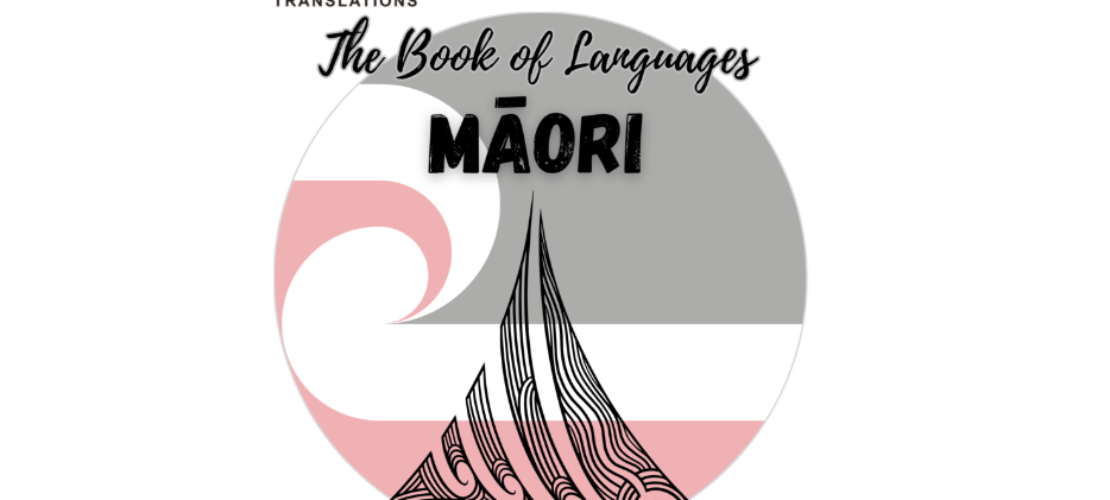让我们来看一看她在2017年3月的TED演讲:Why design should include everyone?
演说文稿:
I want to give you a new perspective. That sounds grandiose, and it is. I left Ireland yesterday morning. I traveled from Dublin to New York independently. But the design of an airport, plane and terminal offers little independence when you’re 105 and a half centimeters tall. For Americans, that’s 3′ 5″. I was whisked through the airport by airline assistants in a wheelchair. Now, I don’t need to use a wheelchair, but the design of an airport and its lack of accessibility means that it’s my only way to get through. With my carry-on bag between my feet, I was wheeled through security, preclearance and I arrived at my boarding gate.
我要给大家一个新视角。 听起来很堂皇,的确是的。 昨天早上我离开爱尔兰。 我独自一人从都柏林飞到纽约。 然而机场、客机和航厦的设计只能给一个身高 105.5 公分的人丁点的独立自主。 对美国人来说,这等于 3 呎 5 吋。 航空公司助理给我推轮椅迅速穿越机场。 我不需要使用轮椅, 但机场的设计和那里缺乏无障碍设施, 意味这是我穿越机场的唯一途径。 我坐着轮椅,双腿夹着手提行李经过安检、出入境审查, 我到达了登机口。
I use the accessibility services in the airport because most of the terminal is just not designed with me in mind. Take security, for example. I’m not strong enough to lift my carry-on bag from the ground to the carousel. I stand at eye level with it. And those who work in that space for safety purposes cannot help me and cannot do it for me. Design inhibits my autonomy and my independence. But traveling at this size, it isn’t all bad. The leg room in economy is like business class.
我使用机场内的无障碍服务, 因为航厦大楼大部分地方都不是为我着想而设计。 就以安检为例。 我不够力气从地面 举起手提行李放到输送带。 输送带及至我站起时眼睛的高度。 基于安全理由,那里的工作人员没法帮我、给我代劳。 设计抑制我的自主性和独立性。 但以这样的身型旅行并非全然糟糕。 经济舱的座位空间就像商务舱的。
I often forget that I’m a little person. It’s the physical environment and society that remind me. Using a public bathroom is an excruciating experience. I walk into the cubicle but I can’t reach the lock on the door. I’m creative and resilient. I look around and see if there’s a bin that I can turn upside down. Is it safe? Not really. Is it hygienic and sanitary? Definitely not. But the alternative is much worse. If that doesn’t work, I use my phone. It gives me an additional four- to six-inch reach, and I try to jam the lock closed with my iPhone. Now, I imagine that’s not what Jony Ive had in mind when he designed the iPhone, but it works. The alternative is that I approach a stranger. I apologize profusely and I ask them to stand guard outside my cubicle door. They do and I emerge grateful but absolutely mortified, and hope that they didn’t notice that I left the bathroom without washing my hands. I carry hand sanitizer with me every single day because the sink, soap dispenser, hand dryer and mirror are all out of my reach.
我往往忘记自己是矮个子。 就是物理环境和社会提醒我。 使用公厕是痛苦至极的经验。 我走进厕所,却没法触及门上的锁。 我富有创意,能屈能伸。 我环顾四周查看有没有可以让我倒转的垃圾桶。 这样做安全吗? 不太安全。 这样做卫生和清洁吗? 当然不是。 但另一个办法远远更糟。 如果行不通,我就用电话。 它让我的手臂延长 4 至 6 吋, 我就尝试用 iPhone 推门锁把门锁上。 现在我想象得到这并非强纳森.艾维设计 iPhone 的原意, 但这却奏效。 另一办法就是我向陌生人请求。 我连番道歉, 要求她们站在厕所门外守候。 她们照样去做, 我就心存感恩站起来, 但我感到非常尴尬, 希望她们没有察觉我离开洗手间前没有洗手。 我每天都带着干洗手, 因为洗手盆、给皂机、烘手机和镜子对我都是高不可攀。
Now, the accessible bathroom is somewhat of an option. In this space, I can reach the lock on the door, the sink, the soap dispenser, the hand dryer and the mirror. Yet, I cannot use the toilet. It is deliberately designed higher so that wheelchair users can transfer across with ease. This is a wonderful and necessary innovation, but in the design world, when we describe a new project or idea as accessible, what does that mean? Who is it accessible to? And whose needs are not being accommodated for?
现在无障碍洗手间有点儿差强人意。 在这个空间,我可以触及门锁、 洗手盆、给皂机、烘手机和镜子。 然而我还未能使用马桶。 它是特意被设计成较高一点, 让轮椅使用者轻易转移到马桶上。 这项创新是绝妙和必需的, 但在设计的领域里,当我们形容一个新项目或想法是无障碍时, 这意味甚么呢? 它是对谁无障碍? 谁的需要没有获得照顾?
Now, the bathroom is an example of where design impinges upon my dignity, but the physical environment impacts upon me in much more casual ways too, something as simple as ordering a cup of coffee. Now, I’ll admit it. I drink far too much coffee. My order is a skinny vanilla latte, but I’m trying to wean myself off the syrup. But the coffee shop, it’s not designed well, at least not for me. Queuing, I’m standing beside the pastry cabinet and the barista calls for the next order. “Next, please!” they shout. They can’t see me. The person next to me in the queue points to my existence and everyone is embarrassed. I order as quick as I can and I move along to collect my coffee. Now, think just for a second. Where do they put it? Up high and without a lid. Reaching up to collect a coffee that I have paid for is an incredibly dangerous experience.
洗手间的设计就是侵犯我尊严的一个例子, 但物理环境也是更不经意地影响我, 简单如点选一杯咖啡也影响我。 现在我得承认 我实在喝了太多咖啡。 我固定点的是脱脂奶香草拿铁, 但我正在尝试戒掉糖浆了。 然而咖啡店设计不佳, 至少对我来说。 我站在糕点柜后排队时, 咖啡师召唤下一位客人点饮料。 「请下一位!」他们呼唤。 他们看不见我。 队中站在我旁边的人指着我 以示我在,所有人都感到尴尬。 我尽快点饮料, 向前走去拿我那杯咖啡。 现在试用一秒去想。 他们把咖啡放在哪里? 放在高处,杯子没有封盖。 伸手去拿我付了钱买的咖啡是一项异常危险的体验。
But design also impinges on the clothes that I want to wear. I want garments that reflect my personality. It’s difficult to find in the childrenswear department. And often womenswear requires far too many alterations. I want shoes that affect my maturity, professionalism and sophistication. Instead, I’m offered sneakers with Velcro straps and light-up shoes. Now, I’m not totally opposed to light-up shoes.
但设计也影响到我想穿的衣服。 我要衣服反映我的个性。 在童装部很难找到一件。 女装往往需要太多修改。 我要鞋子体现我的成熟、 专业精神和丰富经验。 人们反而给我附有魔鬼毡的运动鞋和发光运动鞋。 我不是完全反对发光运动鞋。
But design also impacts on such simple things, like sitting on a chair. I cannot go from a standing to a seating position with grace. Due to the standards of design heights of chairs, I have to crawl on my hands and knees just to get on top of it, whilst also being conscious that it might tip over at any stage.
然而设计也影响诸如坐在椅子上这样简单的事情。 我总不能优雅地由直立转为坐下。 由于座椅的高度设计标准, 我要用双手和双膝才能爬到座椅上, 同时担心座椅可能随时倒下。
But whilst design impacts on me whether it’s a chair, a bathroom, a coffee shop, or clothes, I rely on and benefit from the kindness of strangers. But not everybody is so nice. I’m reminded that I’m a little person when a stranger points, stares, laughs, calls me a name, or takes a photograph of me. This happens almost every day. With the rise of social media, it has given me an opportunity and a platform to have a voice as a blogger and as an activist, but it has also made me nervous that I might become a meme or a viral sensation, all without my consent.
虽然设计影响着我, 无论座椅、洗手间、咖啡店或衣服, 我依靠着陌生人的善心而获益不少。 然而并非每个人都这样好。 当陌生人指向我、瞪我、笑我、侮辱我 或给我拍照,就提醒我还是矮个子。 这种事几乎每天都发生。 社交媒体兴起使我有机会经营部落格和成为活跃分子, 利用它作平台发声, 但也使我担心自己会在未经同意下变成迷因或一夕爆红。
So let’s take a moment right now to make something very clear. The word “midget” is a slur. It evolved from PT Barnum’s era of circuses and freak shows. Society has evolved. So should our vocabulary. Language is a powerful tool. It does not just name our society. It shapes it.
现在就让我们花点时间把事情弄得清清楚楚。 「侏儒」这个词是蔑称。 它是从巴纳姆时代的马戏团和畸形秀演变而成。 社会已经变了。 我们的语汇也要变了。 语言是一项强而有力的工具。 它不只给我们的社会命名。 它塑造社会。
I am incredibly proud to be a little person, to have inherited the condition of achondroplasia. But I am most proud to be Sinead. Achondroplasia is the most common form of dwarfism. Achondroplasia translates as “without cartilage formation.” I have short limbs and achondroplastic facial features, my forehead and my nose. My arms do not straighten fully, but I can lick my elbow. I’m not showing you that one. Achondroplasia occurs in approximately one in every 20,000 births. 80 percent of little people are born to two average-height parents. That means that anybody in this room could have a child with achondroplasia. Yet, I inherited my condition from my dad. I’d like to show you a photo of my family. My mother is average height, my father is a little person and I am the eldest of five children. I have three sisters and one brother. They are all average height. I am incredibly fortunate to have been born into a family that cultivated my curiosity and my tenacity, that protected me from the unkindness and ignorance of strangers and that armed me with the resilience, creativity and confidence that I needed to survive and manipulate the physical environment and society. If I was to pinpoint any reason why I am successful, it is because I was and I am a loved child, now, a loved child with a lot of sass and sarcasm, but a loved child nonetheless.
我为因软骨发育不全症遗传而成为矮个子感到非常自豪。 但使我最自豪的是身为Sinéad 。 软骨发育不全症是侏儒症最常见的形式。 软骨发育不全症的拉丁语源译作「没有软骨形成」。 我四肢短小,面部特征如额头和鼻子的软骨发育不全。 我的双臂不能完全伸直, 但我却可以舔自己的肘部。 我不会向大家示范这个。 每约 2 万名新生婴就有一名软骨发育不全症。 80% 矮个子的双亲皆是中等身高。 这意味这房间内任何人都可能有一名软骨发育不全的子女。 然而我是因父亲遗传而有这状况。 我想给大家看看我的全家福照片。 我的母亲是中等身高, 我的父亲是矮个子, 而我是五名子女中最年长的。 我有三名妹妹和一名弟弟。 他们都是中等身高。 我十分荣幸能够诞生在这个家庭, 这个家庭培养我的好奇心和韧力, 让我免受陌生人的不友善对待和愚昧影响, 使我能屈能伸、 充满创意、信心十足, 这些特质都是我所赖以生存和驾驭物理环境和社会。 假如我要点出我成功的任何一个原因, 那就是我一直到现在都是一个受宠爱的孩子, 一个现在口没遮拦、 尖酸刻薄的受宠爱孩子, 但毕竟还是受宠爱的孩子。
In giving you an insight into who I am today I wanted to offer you a new perspective. I wanted to challenge the idea that design is but a tool to create function and beauty. Design greatly impacts upon people’s lives, all lives. Design is a way in which we can feel included in the world, but it is also a way in which we can uphold a person’s dignity and their human rights. Design can also inflict vulnerability on a group whose needs aren’t considered.
今天我让大家了解我是谁, 就是想给大家一个新视角。 我要挑战的一个想法, 就是设计不外乎是 营造功能和美感的工具。 设计大大影响人们的生活, 所有人的生活。 设计是让我们感到获世界接纳的一种方式, 也是让我们维护一个人的 尊严和人权的一种方式。 设计也可以使某一群体处于弱势,其需要得不到考虑。
So today, I want your perceptions challenged. Who are we not designing for? How can we amplify their voices and their experiences? What is the next step? Design is an enormous privilege, but it is a bigger responsibility. I want you to open your eyes.
所以我想在今天挑战各位的观念。 我们设计时忽略了谁? 我们可以怎样放大他们的声音、 增强他们的体验? 下一步是什么? 设计是一项庞大的特权, 但也涉及更大的责任。 我想大家睁开眼睛。
Thank you so much.
感谢大家。
(Chinese, Traditional translation by Winston Szeto. Reviewed by Nan-Kun Wu.)

